Leveraging Human Expertise for LLM-Assisted Dialogue Character Extraction and Attribution in Classic Chinese Novel
Yutong Yang, Shanghai Jiao Tong University

1. Introduction
Classic Chinese Novels - Using Distance Reading to Understand Complex Narratives
· Revealing new insights into character relationships and narrative roles...
Social Network Analysis - Requiring Accurate Data Extracted from the Novels
· Challenges in classic Chinese novels
· Challenges in data extraction
Challenges in Classic Chinese Novels
- Complex character networks
- Rich contexts
- Multiple aliases per character

Dream of the Red Chamber



Challenges in Data Extraction
- Manual extraction of characters from classic Chinese novels requires significant human effort and is highly time-consuming.
- The richness of context in novels and the complexity of character references present challenges for fully automated extraction methods.
2. Framework Overview
Back-end Processing
- Data extraction
- LLM processing
- Character identification
Front-end Interface
- Interactive annotation
- Visualization
- Manual refinement

3. Back-end Data Processing
3.1 Upload and Segmentation
Text Upload
Original novel text upload
Rule-based Segmentation
Break into dialogue units with context
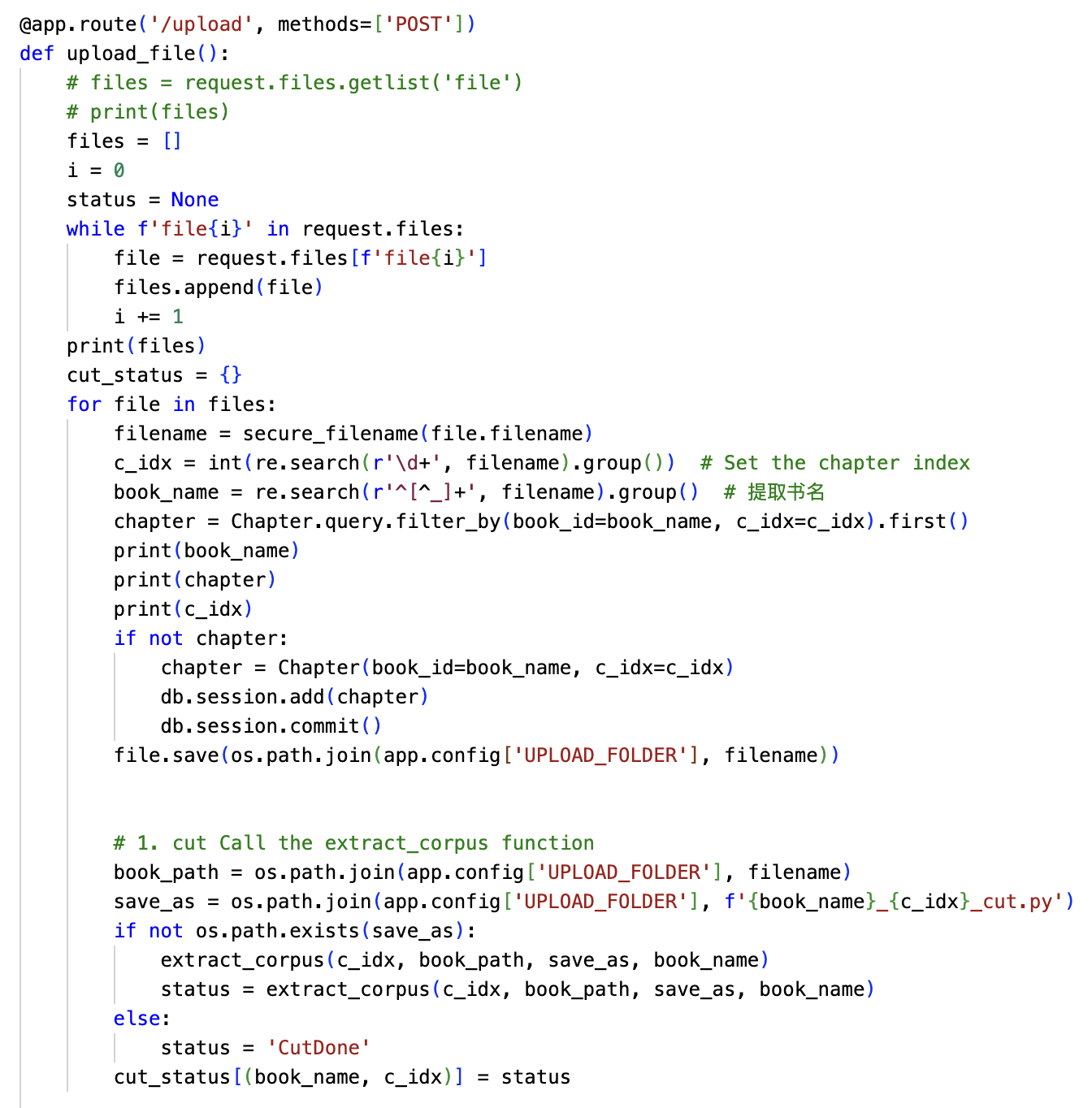
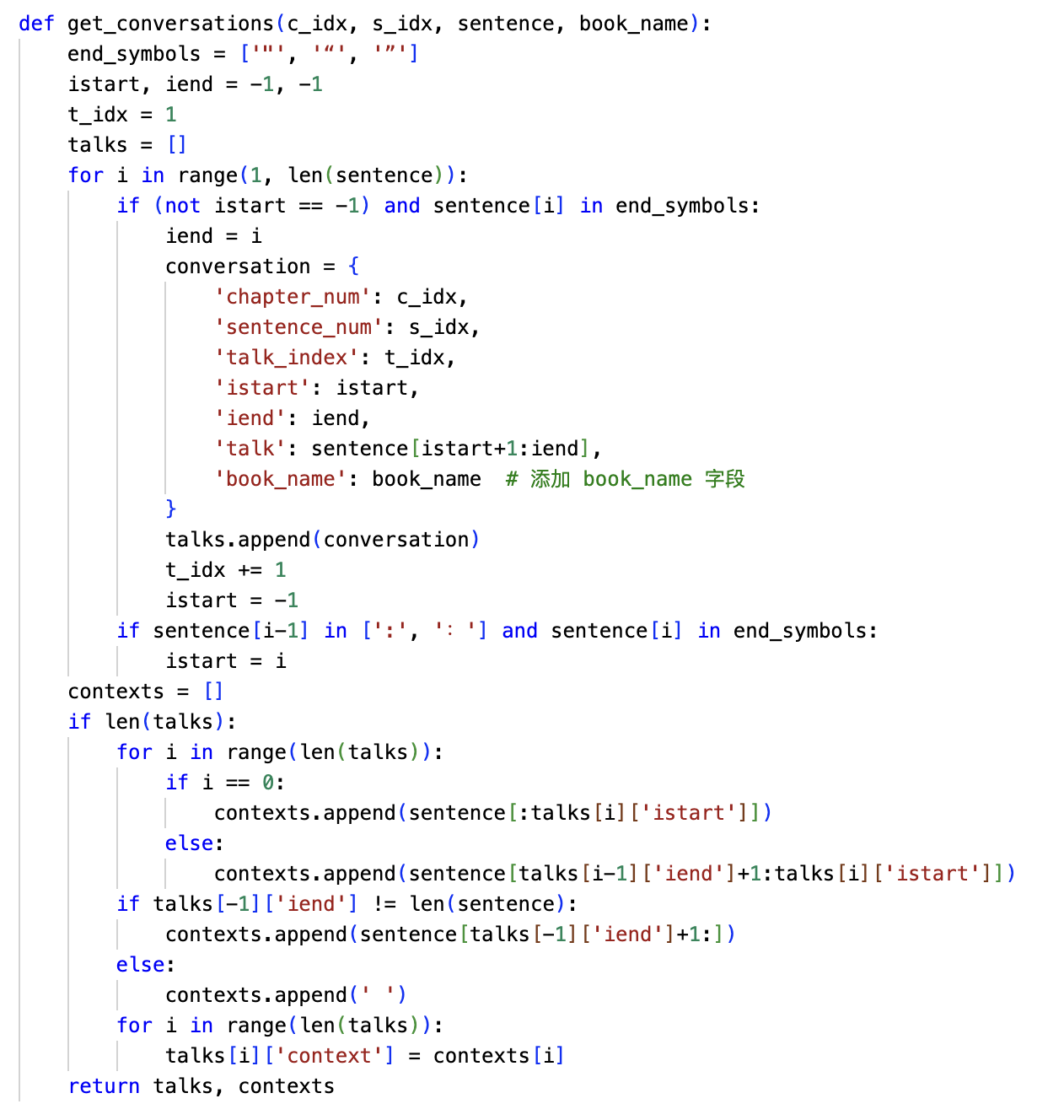
3.2 LLM-Based Extraction
Speaker and Listener Extraction
prompt = f"\nQ: I will give you a dialogue sentence and a passage of context. Please repeat the dialogue sentence, then based on the context, identify the speaker, the primary listener(s), and the secondary listener(s) in the specified dialogue sentence. Dialogue sentence: {talk}. Context: {context}. Please provide your answer in the format: 'Dialogue sentence: [dialogue], Speaker: [speaker], Primary Listener(s): [primary listener(s)], Secondary Listener(s): [secondary listener(s)]'. Note: 1. Use commas (",") to separate the dialogue sentence, speaker, primary listener(s), and secondary listener(s); 2. If there are multiple speakers or multiple primary/secondary listeners, separate them using "、"; 3. Do not insert any line breaks in your answer; 4. Resolve pronoun references carefully and avoid vague references like "you", "I", "he", etc.; 5. Do not include any explanation or analysis in your answer — treat it like a fill-in-the-blank question. The more concise, the better; 6. If the speaker, primary listener(s), or secondary listener(s) cannot be identified, respond with 'None'. \nA:"
⇢ Add to Database
3.3 LLM-Assisted Attribution
Resolve Co-references
prompt = f"\nQ:This is a fill-in-the-blank question with an answer of 0 or 1. Please determine: In the book '{chinese_book_name}', are '{entity}' and '{main_entity}' the same character? If yes, return 1; if not, return 0. Do not consider literary implications. No explanation or analysis is needed." \nA:"
⇢ Add to Database
4. Front-end Annotation Interface

4.1 Worktable
Upload & Cut Dialogues
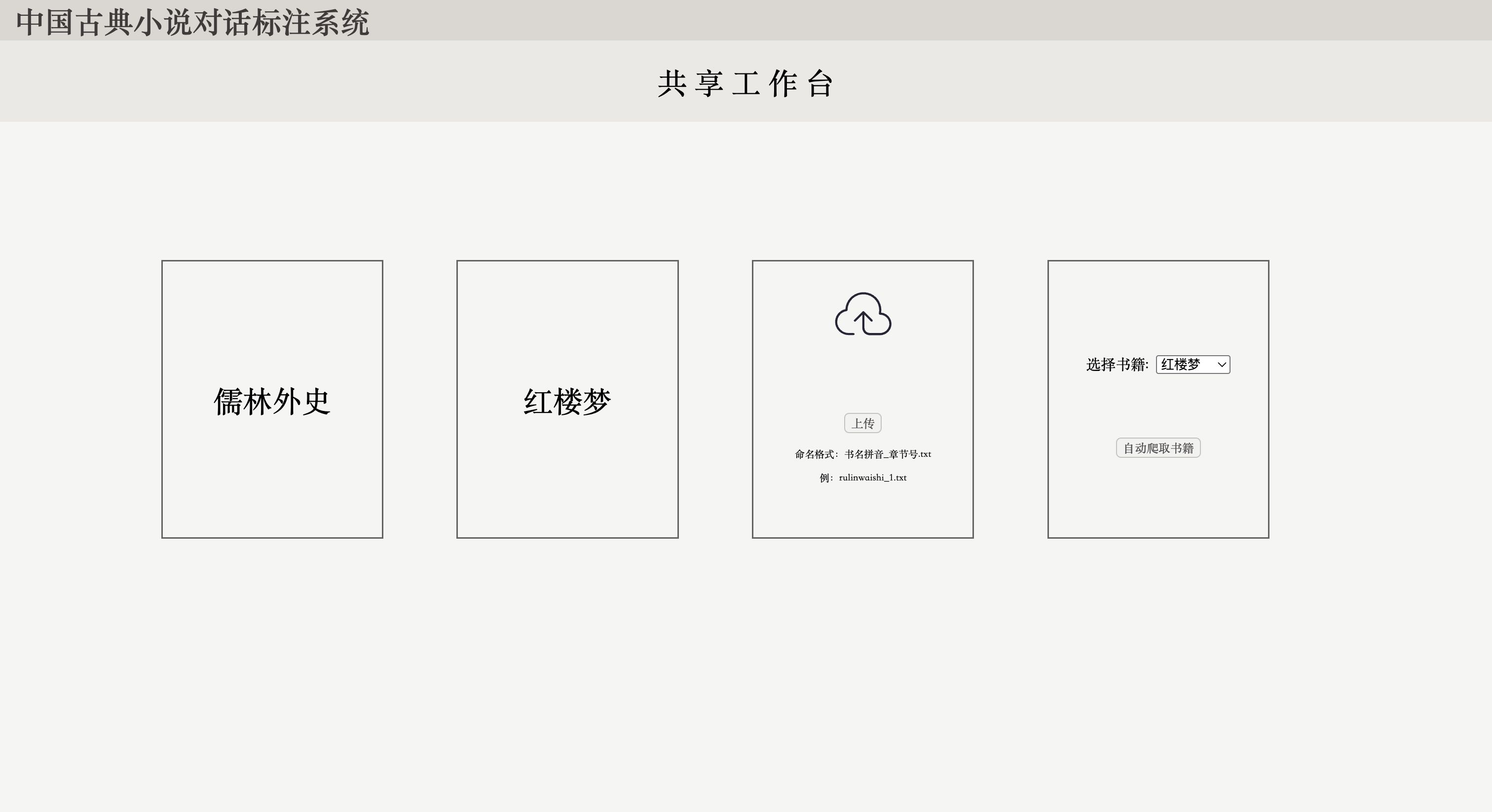
4.2 Interactive Annotation
Refine annotations: click to switch roles
4.3 Visualization Features
Data visualization design
- Large nodes (green) = main name
- Small nodes (yellow) = aliases
- Links between large nodes = relations (measured with numbers of conversation)
- Chapter-specific networks: generating dialogue networks for all character relationships up to the current chapter, revealing narrative progression.
4.3 Visualization Features
Manual Disambiguation
Correct extraction errors
5. Simple Insights from the Data Visualization
Key Characters
Important intermediary characters identified
Interaction Patterns
Social dynamics revealed
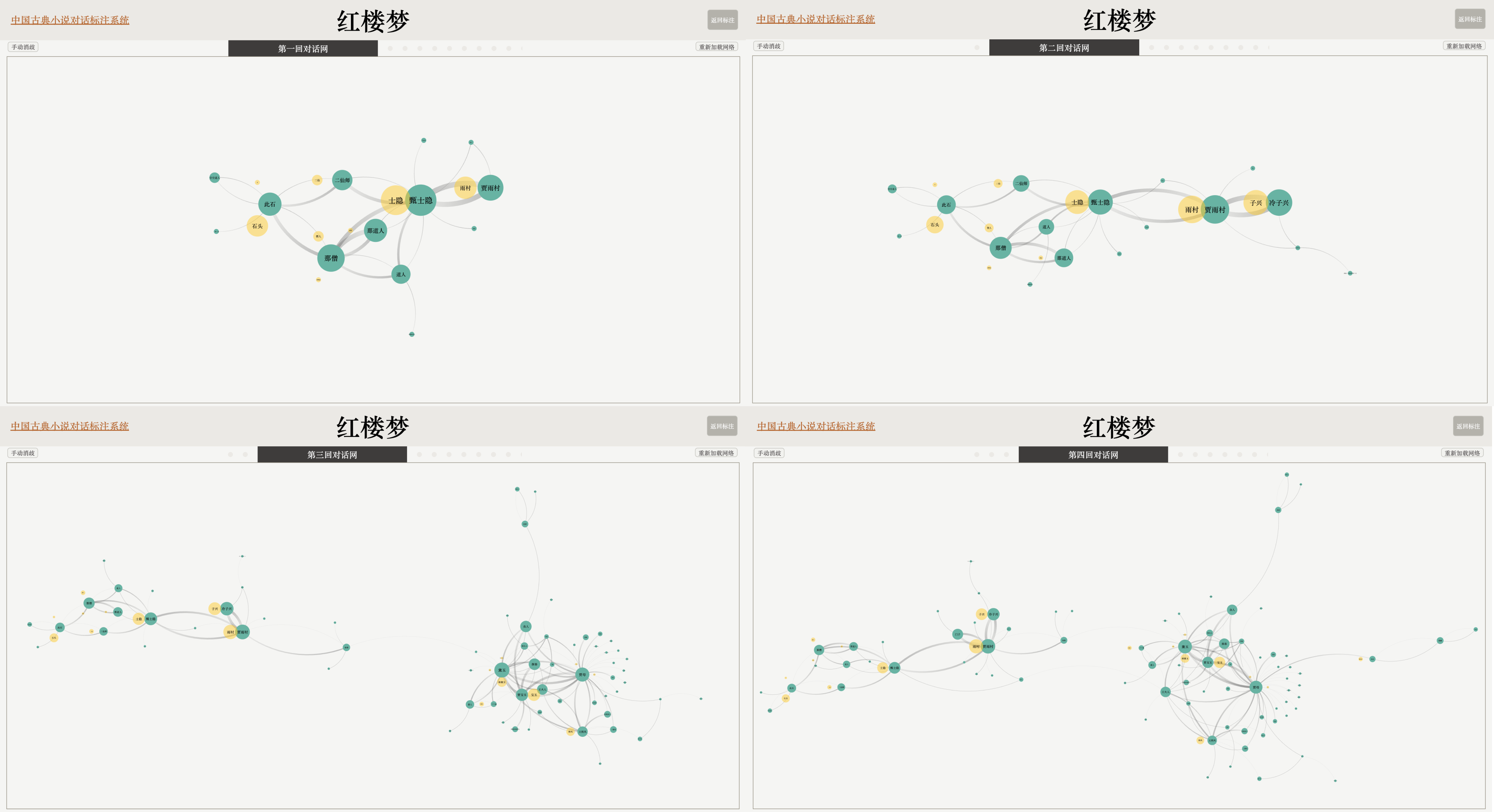
Network of the first chapter
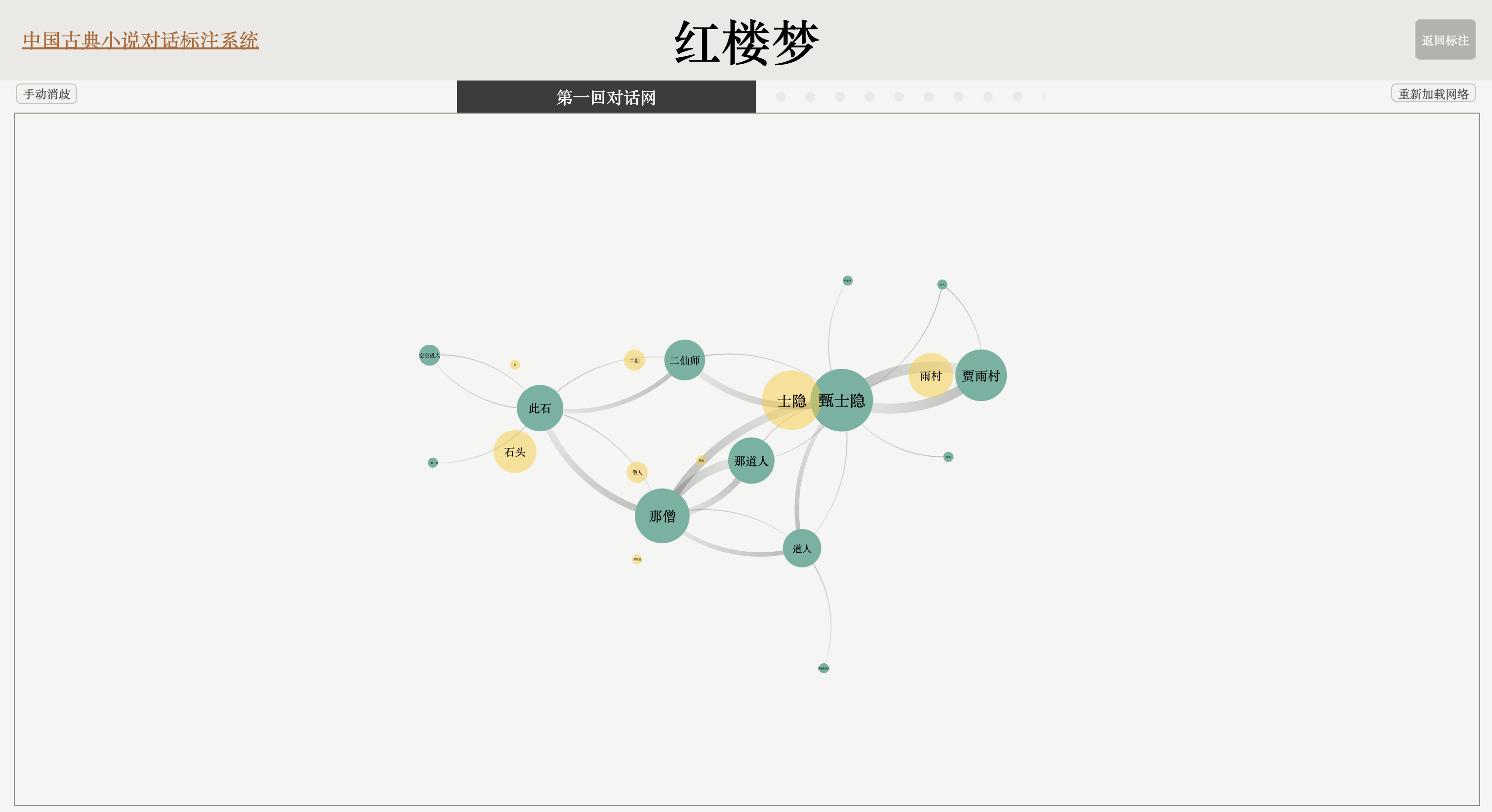
Network of the second chapter
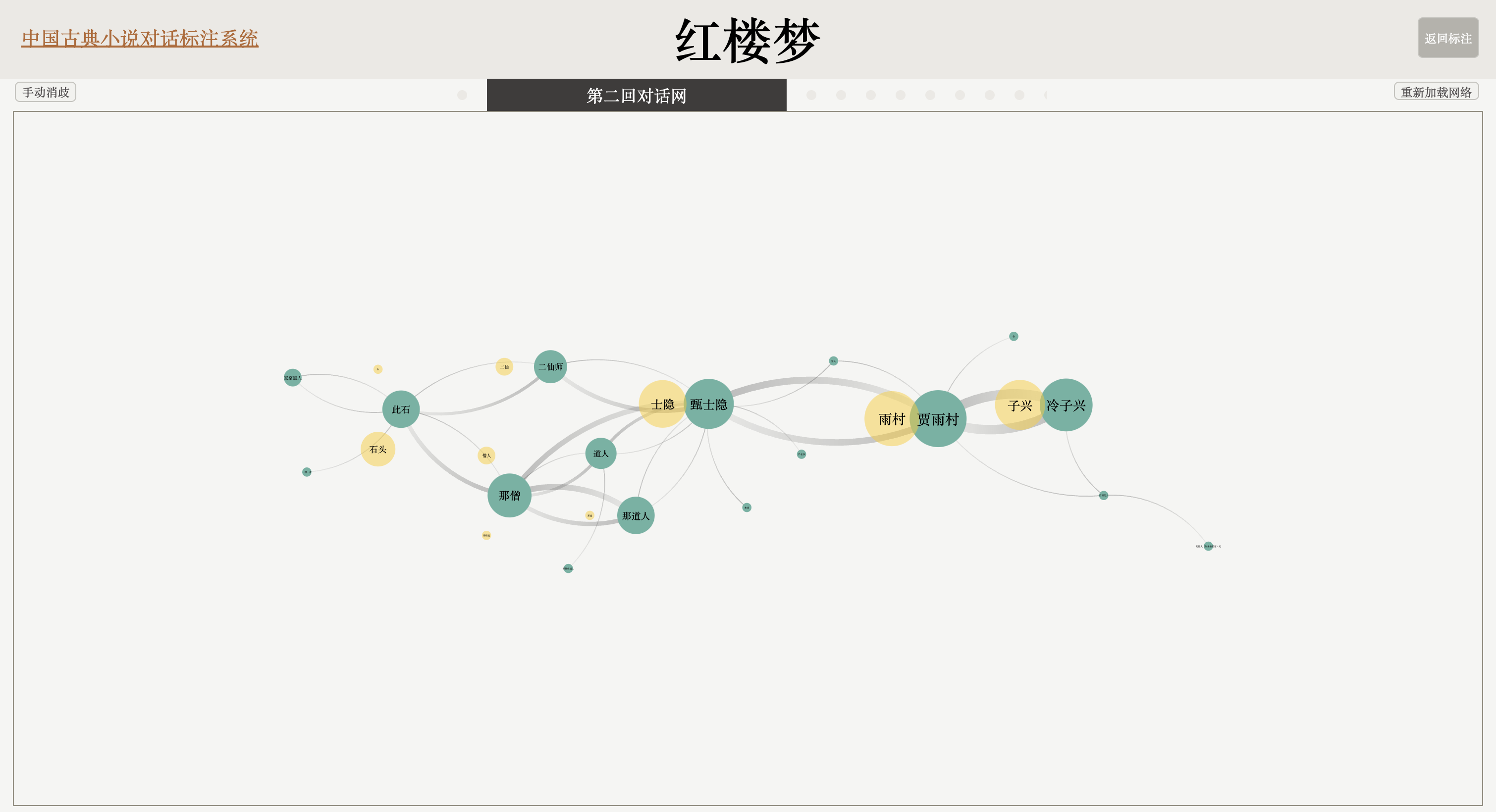
Network of the third chapter
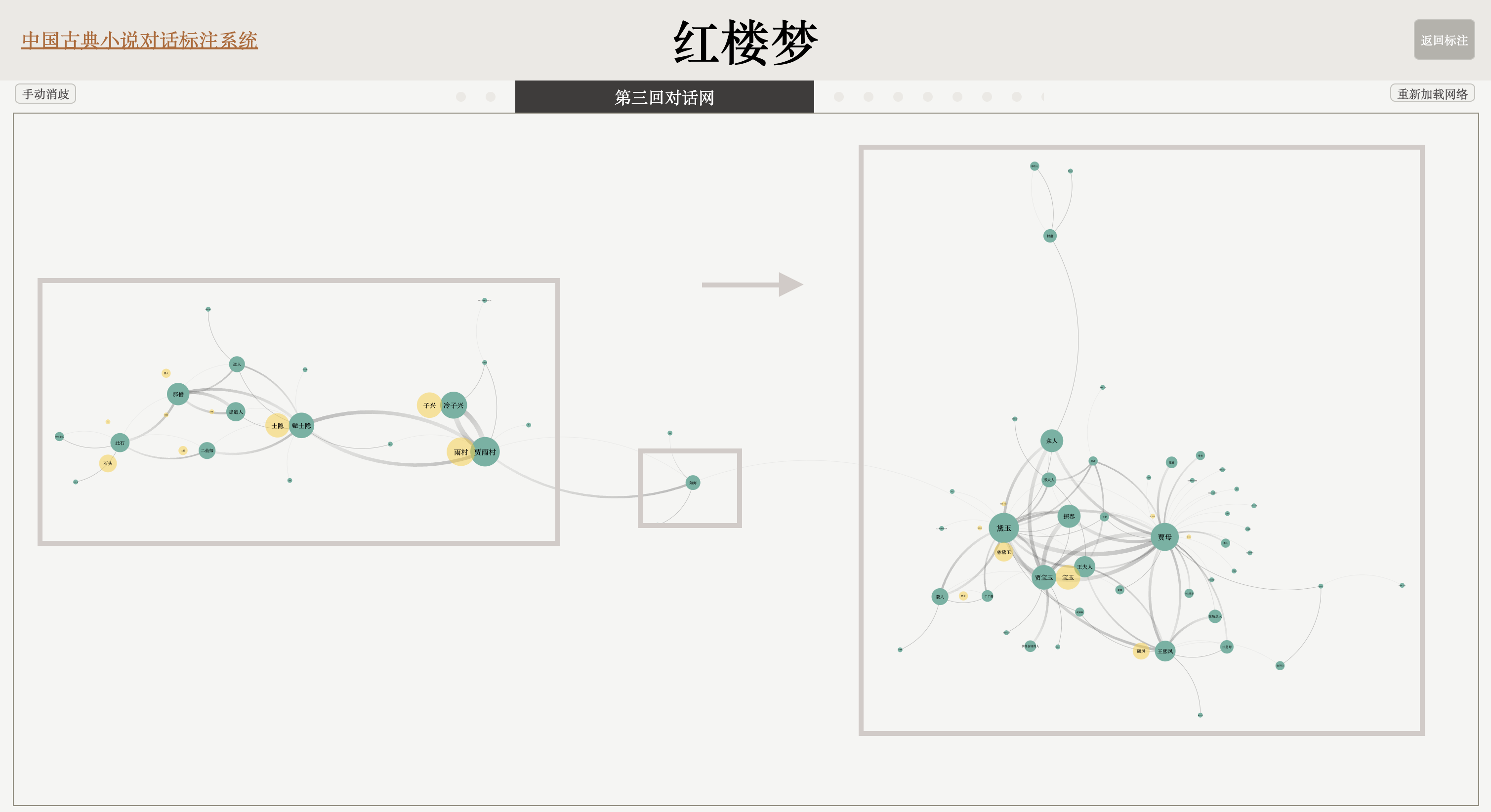
Network of the forth chapter
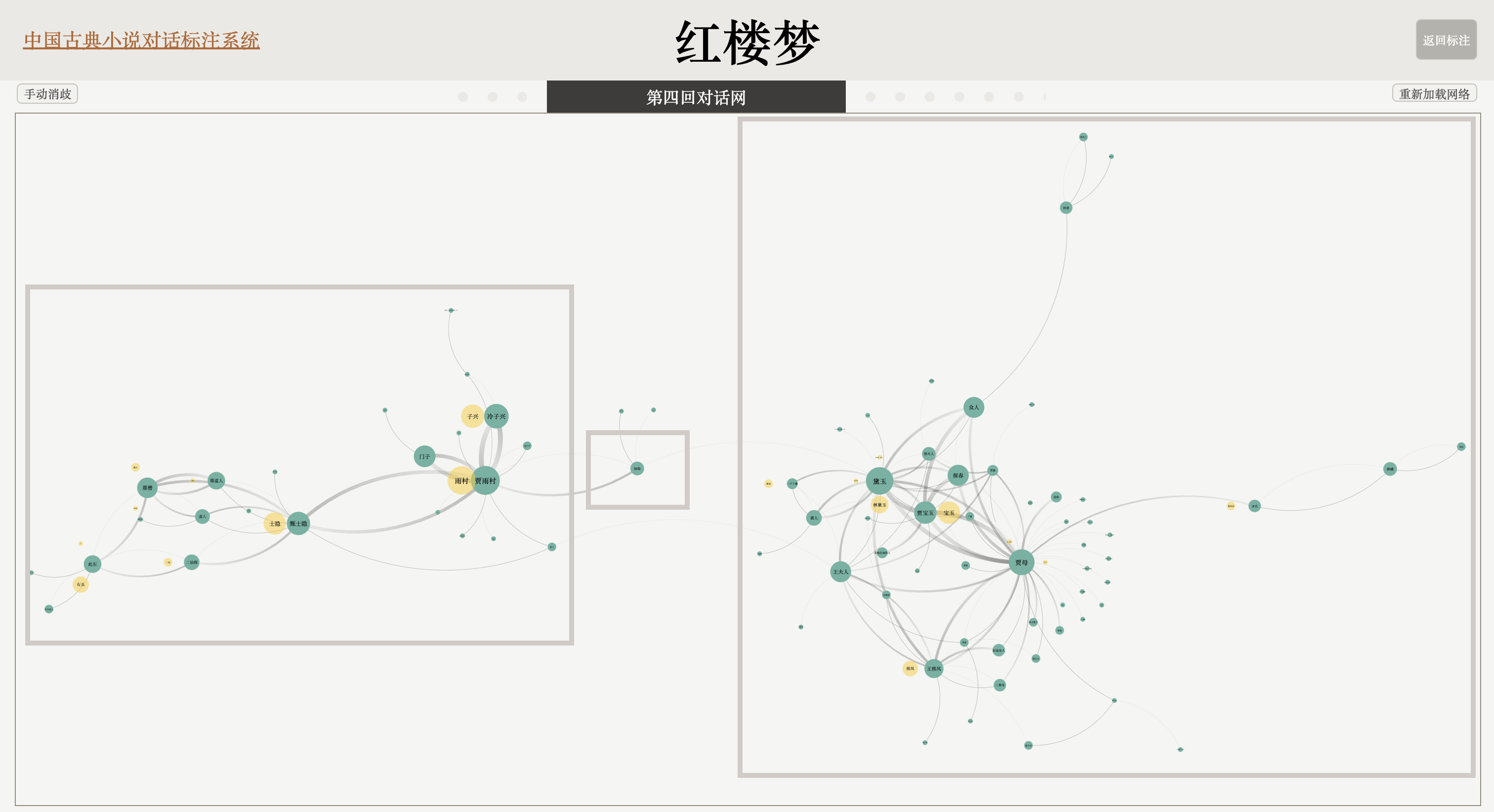
6. Conclusion
6.1 Summary
AI + Human

6.2 TODOs
Improving Algorithm Efficiency
Improve the speed of data processing, thus generate the result faster.
Incorporating SNA Algorithm
Use social network analysis algorithm to build a final network, which can directly serve for the literary analysis.
Thank You!
flora20@sjtu.edu.cn
https://yutong-yang.github.io/